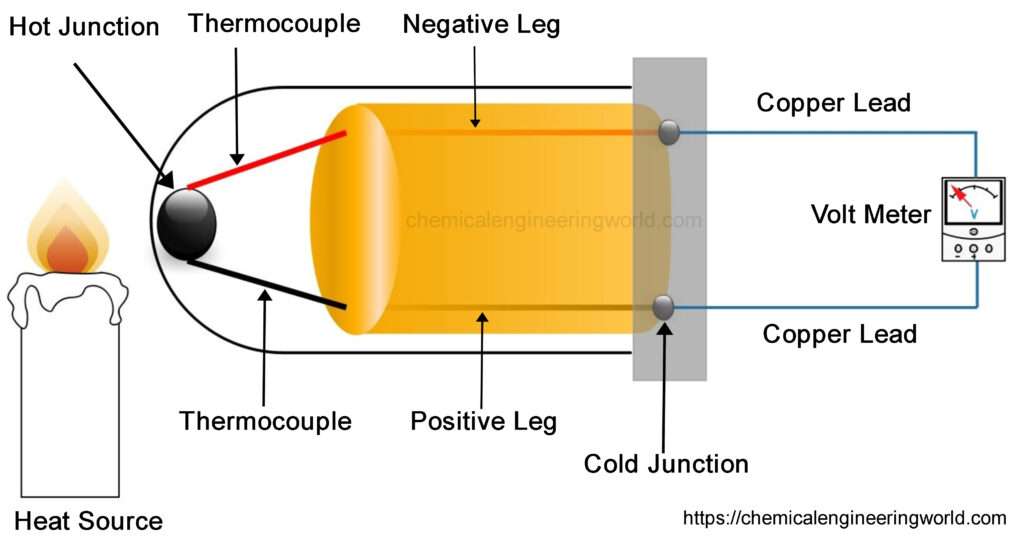Thermocouple Working and Types

Thermocouple Working and Types
Thermocouple Working and Types
A thermocouple is a device which is used to measure temperature. It is essentially one of the temperature measurement sensors. It is used in all the industries where the control of temperature or heat flow is required for the processes. Hence it is used in chemical, process, oil and gas, metal extraction, petroleum, petrochemical, pharmaceuticals, cement, glass, ceramics, power generation, paper and pulp and many more industries. They are also used in regular everyday appliances like stove, toasters, furnace etc.
The thermocouples consists of two metal wires, both the wires are dissimilar in nature. They are joined by a thermocouple thermometer at the other end.
Working of Thermocouple
The dissimilar metal wires in the thermocouple are joined to form a junction. Joining them completes a thermoelectric circuit. When the temperature at the junction will increase then a current is produced. The junction at which temperature increases is called the hot junction and there is one more junction at the other end called cold junction. The cold junction will also have a certain temperature. Essentially there is a temperature difference in the circuit. The heat flows from the hot side to the cold side, at an atomic scale the charge carriers also diffuse from hot end to cold end. It means the temperature difference has created a voltage in the circuit. The relationship between voltage and temperature difference can be quantified and the thermocouple calibrated for use.
Types of Thermocouples
Thermocouples come in various forms and in numerous varieties. The varieties are so large that appropriate thermocouples have to be selected for a particular application. The most common type of thermocouple are type K, J, T and E. All theses common thermocouples have a standard accuracy and all are made of base metals.
- Type K thermocouple: The material of construction of such thermocouples are either Nickel-Chromium or Nickel-Alumel. It is the most common thermocouple used because it is inexpensive, reliable, accurate, also has a wide temperature range.
- Type J thermocouple: The material of construction of such thermocouples are Iron or Constantan. It is the next common thermocouple after type K. It is also inexpensive and reliable but it has a relatively shorter temperature range and life span.
- Type T thermocouple: The material of construction is Copper or Constantan. It is a very stable thermocouple, it is made to be used in low temperature applications.
- Type E thermocouple: The material of construction is Nickel-Chromium or Constantan. This thermocouple is preferred in applications which demand a better accuracy compared to type K or J at moderate conditions.
Advantages of Thermocouple
- They are quite simple in construction, have low cost and are quite durable in nature.
- They offer wide range of temperature measurement.
- They have a fast response time of measurement.
Disadvantages of thermocouple
- The underlying relationship between variables is not linear. It is non-linear in nature.
- It requires reference and recalibration is difficult.
- It is quite susceptible to electromagnetic interference and radio frequency interference.
Reference:- thermocoupleinfo, automationforum































